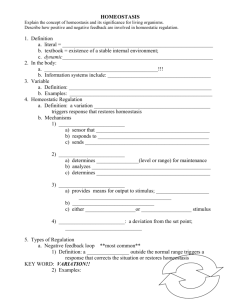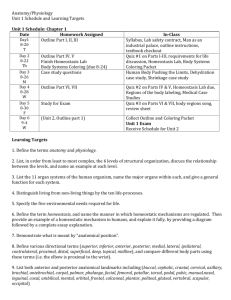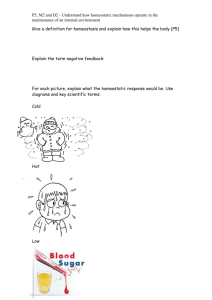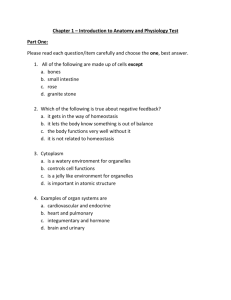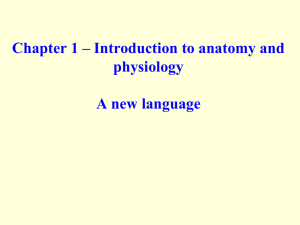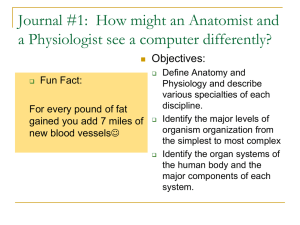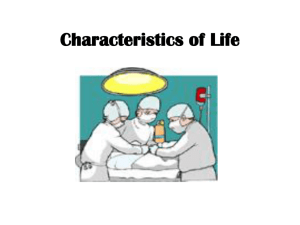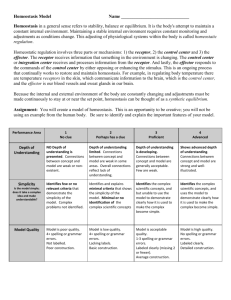The Human Body: An Orientation
advertisement
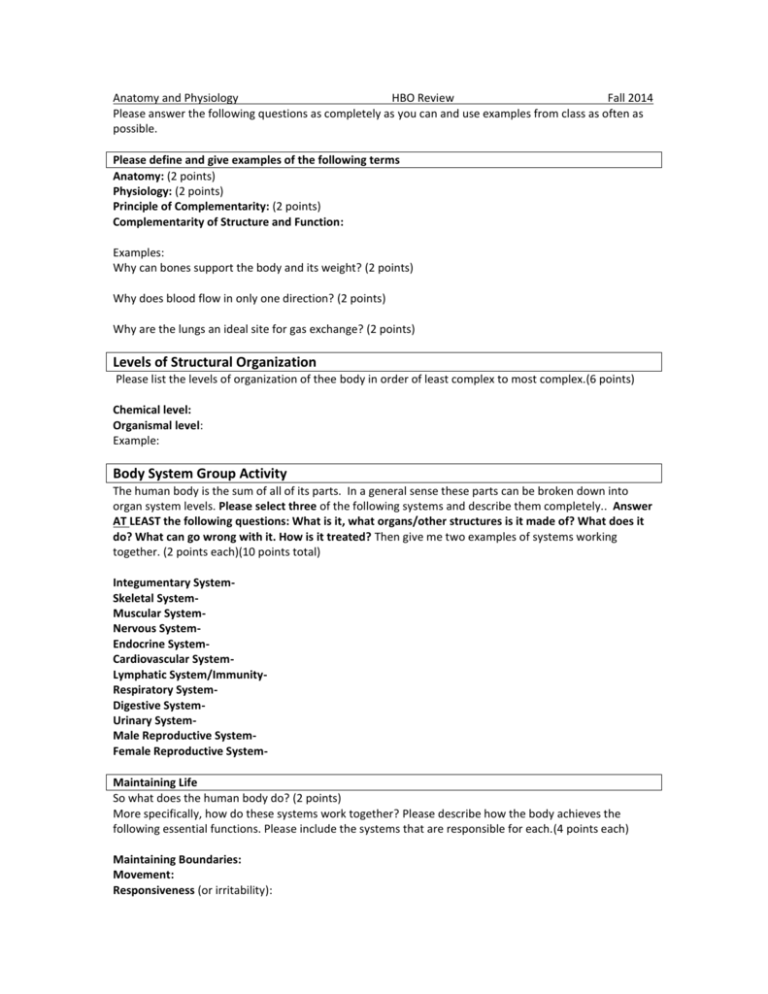
Anatomy and Physiology HBO Review Fall 2014 Please answer the following questions as completely as you can and use examples from class as often as possible. Please define and give examples of the following terms Anatomy: (2 points) Physiology: (2 points) Principle of Complementarity: (2 points) Complementarity of Structure and Function: Examples: Why can bones support the body and its weight? (2 points) Why does blood flow in only one direction? (2 points) Why are the lungs an ideal site for gas exchange? (2 points) Levels of Structural Organization Please list the levels of organization of thee body in order of least complex to most complex.(6 points) Chemical level: Organismal level: Example: Body System Group Activity The human body is the sum of all of its parts. In a general sense these parts can be broken down into organ system levels. Please select three of the following systems and describe them completely.. Answer AT LEAST the following questions: What is it, what organs/other structures is it made of? What does it do? What can go wrong with it. How is it treated? Then give me two examples of systems working together. (2 points each)(10 points total) Integumentary SystemSkeletal SystemMuscular SystemNervous SystemEndocrine SystemCardiovascular SystemLymphatic System/ImmunityRespiratory SystemDigestive SystemUrinary SystemMale Reproductive SystemFemale Reproductive SystemMaintaining Life So what does the human body do? (2 points) More specifically, how do these systems work together? Please describe how the body achieves the following essential functions. Please include the systems that are responsible for each.(4 points each) Maintaining Boundaries: Movement: Responsiveness (or irritability): DigestionMetabolismExcretionReproduction Growth Survival Needs Again, what is the ultimate goal of all body systems? (2 points) There are some specific factors that need to be present. Tell me why and where the body gets them. (2 points each) NutrientsOxygenExtra credit: Are there any exceptions to this? If so, please describe one here: Water-accounts for what percent of body weight? ___________ percent of body weight (2 points) It is the single most abundant chemical substance in the body. Water is obtained through foods and liquids and is lost though evaporation from the lungs and skin. Normal body temperature- is essential for chemical reactions to continue at life-sustaining rates. Why? (2 points) Most body heat is generated by __________ __________________.(2 points) Atmospheric Pressure is the force that air exerts on the surface of the body. Please describe the importance of constant air pressure to the human body. Please use AT LEAST one example we discussed in class to support your explanation.(12 points) Homeostasis When we stop to think about it, it is pretty amazing that although the body is composed of trillions of cells in constant activity, and that remarkably little goes wrong with it, we realize how amazing our bodies are. Walter Cannon, a physiologist a really long time ago called it the “wisdom of the body” and created the term homeostasis, Homeostasis: (2 points) As a result, internal conditions may very, but always within relatively narrow limits. Maintaining homeostasis is more complicated that it seems at first. Every organ system plays its own role in maintaining the constancy of the internal environment. What would happen if they didn’t? Homeostatic Control Mechanisms Communication within the body is essential for homeostasis. Communication is accomplished chiefly by ______________and ____________________ systems. Regardless of the factor or the event being regulated, the variable, all homeostatic control mechanisms have at least three interdependent components (2 points each) a) The first component is a receptor. The responsibility of the receptor is b) The second component is the control center. The responsibility of the control center is c) The third component is the effector. The responsibility of the effector is Now, draw them here: And don’t forget to include the pathways. (6 points) Negative Feedback Mechanisms. Please describe what happens in a negative feedback mechanism and draw an example below. (6 points) In negative feedback mechanisms, Example: What are some others? Positive Feedback Mechanisms. Please describe what happens in a positive feedback mechanism and draw an example below. (6 points) In positive feedback mechanisms, Example: Blood Clotting Blood clotting is a normal response to a break in the lining of a blood vessel and is an excellent of a positive feedback mechanism. Basically, it works like this: Homeostatic Imbalance Homeostasis is so important that most disease is regarded to as a result of its disturbance, a condition called homeostatic imbalance. Another example of homeostatic imbalance happens as we age. What happens as we get older? Talkin’ the Talk: Anatomical Terminology Define cytology: Define systemic anatomy Define anatomical pathology: Directional terms. Please define the following directional terms: (2 points each) Anterior: Posterior: Superior: Inferior: Lateral: Medial: Proximal: Distal: Superficial: Deep: Please describe the following anatomical positions: (2 points each) Supine: Prone: Regional Terms Please name the part of your body that each regional term describes: (2 points each) Temporal: Buccal: Axillary: Digital: Crural: Tarsal Body Planes and Sections Please define the following anatomical planes: (2 points each) Tranverse: Sagittal: Medial: Coronal or Frontal: And put them on the following diagram: Body Cavities and Linings Membranes in the ventral body cavity Please describe the following terms and draw a diagram that includes them. (2 points each) Serosa: Visceral serosa: Pleural serosa: Serous fluid: Now give an example: (Think: the heart) (3 points) Extending it… 37. We investigated two situations in which elite athletes pushed their bodies to and beyond the normal limits of homeostasis with a little help from technology. (David Carter and Dave Shaw) Please describe what happened in each situation and the specific challenges met, then if/ how they were dealt with. Then answer the question: Are these experiences valuable learning opportunities, and if so, what can we learn from them? 38. Suspended Animation/ The Edge of Medicine Please briefly describe what is involved in suspended animation. Then tell me whether it is a useful technology. What ere some possibilities? Are you sold on the idea? Why or why not?(12 points) 39. Now, please draw one of the organ systems of the shark you dissected. Please look at similarities and differences between the structure of the shark and that of humans. Why are these differences in structure necessary to each? (Think about where each lives and how it gathers food and other resources) (12 points)


